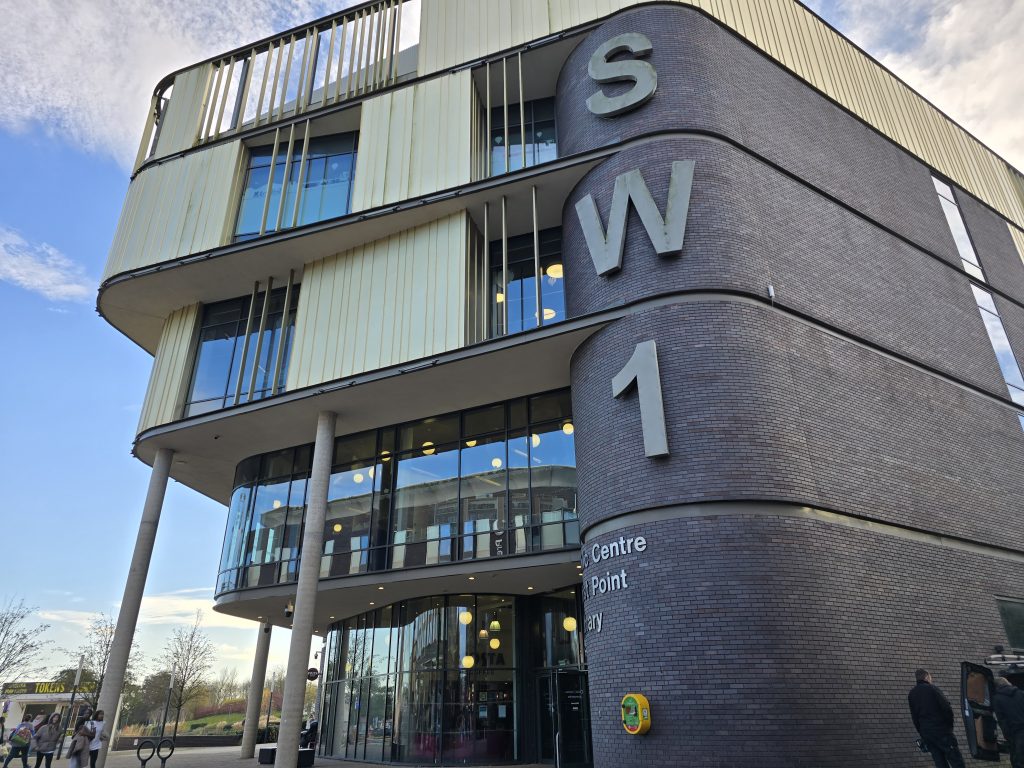10,000 children living in poverty in Telford
More than 10,000 children in Telford were living in families classed as having a relative low income, according to figures released this week.
The numbers show that child poverty statistics widened in the borough in the year up to 2023-24 when they sat at 27.1 per cent of children aged under 16.
The year before, the figures were 9,768 children and 26 per cent, according to figures published this week by the Department for Work & Pensions.
Telford MP Shaun Davies, who was elected to Parliament in July 2024, said child poverty is a critical issue and the Government is “determined to change this.”
Mr Davies, who is also a councillor and former leader of Telford & Wrekin Council, said: “Child poverty is a critical issue, and Government is committed to tackling it.
“The rise of 700,000 children living in poverty across the country since 2010 is unacceptable, and we are determined to change this.”
Mr Davies insists that the way out of poverty is “good education and well-paid work”.
He said: “The National living wage and minimum wage has increased to its highest level ever this means in Telford and Wrekin, 4,000 people will receive a £1,400 pay rise.”
He also supports Labour’s Employment Rights Bill which he says “will help keep people in Telford in their jobs by providing greater job security and protection against exploitative zero-hours contracts.
“Everyone deserves access to a safe and secure place to call home and through the Renters’ Rights Bill, renters can challenge unfair rent hikes and banning no-fault evictions which is a major driver of child poverty.
“We are also investing £2 billion in building new social housing which aimed at individuals and families in need of affordable housing.
“The Government is making childcare more accessible to support families to work; including the rollout of free breakfast clubs to help every child start their day well.
“This government is also investing heavily into schools, here in Telford we have some of the best schools in the country – giving our children the best start of life.
“Additionally, we have extended the Household Support Fund to assist those struggling to cover everyday expenses like food, energy bills, and other necessities. Telford & Wrekin Council has been allocated a further £2.669 million from April 1, 2025 to March 31 2026.”
Mr Davies said Prime Minister Sir Keir Starmer has appointed a ministerial taskforce dedicated to tackling child poverty, which is shortly set to report for the first time.
“In Telford, I will always fight to secure our fair share of this investment, ensuring that our residents truly feel the benefits.”
Telford & Wrekin Council says it is a “sad but true reflection that over 10,000 young people in the borough live in low-income households”but it is doing “all we can” to support them.
Councillor Shirley Reynolds (Labour, Wrockwardine Wood & Trench), Telford & Wrekin Council’s Cabinet Member for Children, Young People, Education, Employment and Skills, said: “It’s a sad but true reflection that over 10,000 young people in Telford and Wrekin live in low-income households; a number which has increased following the cost-of-living pressures over the last few years and mirrors the situation nationally.
“At Telford and Wrekin Council we are doing all we can to support these households and the young people living in them, focusing on early years support, high quality early education and healthcare to give them the best start possible.
“This support extends beyond term-time too, with supermarket vouchers for families in receipt of school meals during school holidays through the Household Support Fund, a range of free and low-cost holiday activities, free swimming lessons for under 10s and free swimming sessions for under 25s.
“Supporting early years development, we currently have six Family Hubs across the borough, which have been accessed by over 8,500 people in the last twelve months, and have plans to open more later this year. These are based at local centres and offer families free information, guidance and support including baby health, parenting and healthy lifestyles, to help give children the best start in Iife.”
The councillor added that it is investing in young people through its skills agenda which leads to better jobs
Councillor Reynolds added that the council’s Job Box team also “supports people to access training and work opportunities “.
She also referred to last week’s Skills Show which was “the most popular yet, attended by more than 2,300 school children and 2,500 other residents, all looking for careers and jobs advice.”
Here is a list showing where Telford sits in the list of the proportion of children under 16 in the UK living in families classed as having relative low income in 2023/24, by local authority.
PA News said that relative low income is defined here as any family claiming child benefit and at least one other household benefit (such as universal credit, tax credits or housing benefit) at any point in the financial year.
The list reads, from left to right: name of local authority; region or nation (in brackets); proportion of children in relative low income families in 2023/24; number (in brackets) of children in 2023/24; proportion of children in 2022/23; number (in brackets) of children in 2022/23.
The list is ranked by the proportion in 2023/24, starting with the highest.
Pendle (NW England): 44.6 per cent (9,190); 43.0 per cent (8,805)
Bradford (Yorkshire/Humber): 44.2 per cent (55,331); 43.4 per cent(54,055)
The areas with the lowest proportion of children in low income:
Wokingham (SE England): 7.1 per cent (2,733); 7.2 per cent (2,742)
Elmbridge (SE England): 6.4 per cent (1,921); 6.3 per cent (1,910)
Richmond upon Thames (London): 5.6 per cent (2,213); 5.5 per cent (2,160)
Among council areas in the West Midlands and other areas close to Telford:
Birmingham (West Midlands): 41.7% (107,183); 41.4% (105,491)
Stoke-on-Trent (West Midlands): 39.7% (21,338); 38.7% (20,421)
Sandwell (West Midlands): 37.7% (29,146); 37.1% (28,255)
Walsall (West Midlands): 36.0% (22,492); 35.8% (22,042)
Wolverhampton (West Midlands): 35.7% (20,827); 35.1% (19,925)
Dudley (West Midlands): 29.7% (18,435); 28.8% (17,678)
Telford & Wrekin (West Midlands): 27.1% (10,359); 26.0% (9,768)
East Staffordshire (West Midlands): 27.0% (6,650); 26.5% (6,324)
Cannock Chase (West Midlands): 24.4% (4,468); 23.7% (4,283)
Redditch (West Midlands): 24.2% (4,037); 22.0% (3,705)
Wyre Forest (West Midlands): 24.2% (4,085); 23.6% (4,010)
Newcastle-under-Lyme (West Midlands): 23.3% (4,781); 22.9% (4,621)
Worcester (West Midlands): 23.0% (4,208); 22.8% (4,135)
Wrexham (Wales): 22.5% (5,520); 21.1% (5,204)
Tamworth (West Midlands): 22.3% (3,400); 21.5% (3,251)
Powys (Wales): 22.2% (4,565); 21.7% (4,475)
Nuneaton & Bedworth (West Midlands): 22.0% (5,878); 21.3% (5,554)
Herefordshire (West Midlands): 21.3% (6,423); 19.8% (5,955)
Shropshire (West Midlands): 19.7% (10,245); 18.7% (9,681)
North Warwickshire (West Midlands): 19.3% (2,226); 18.5% (2,117)
Staffordshire Moorlands (West Midlands): 18.8% (2,807); 17.9% (2,678)
South Staffordshire (West Midlands): 18.3% (3,247); 17.2% (3,002)
Stafford (West Midlands): 18.1% (4,264); 17.5% (4,112)
Cheshire West and Chester (NW England): 17.8% (11,164); 17.3% (10,772)
Solihull (West Midlands): 15.9% (6,819); 15.4% (6,557)
Lichfield (West Midlands): 15.0% (2,772); 14.5% (2,639)
Rugby (West Midlands): 14.2% (3,326); 13.8% (3,148).
Pic: Telford Live



